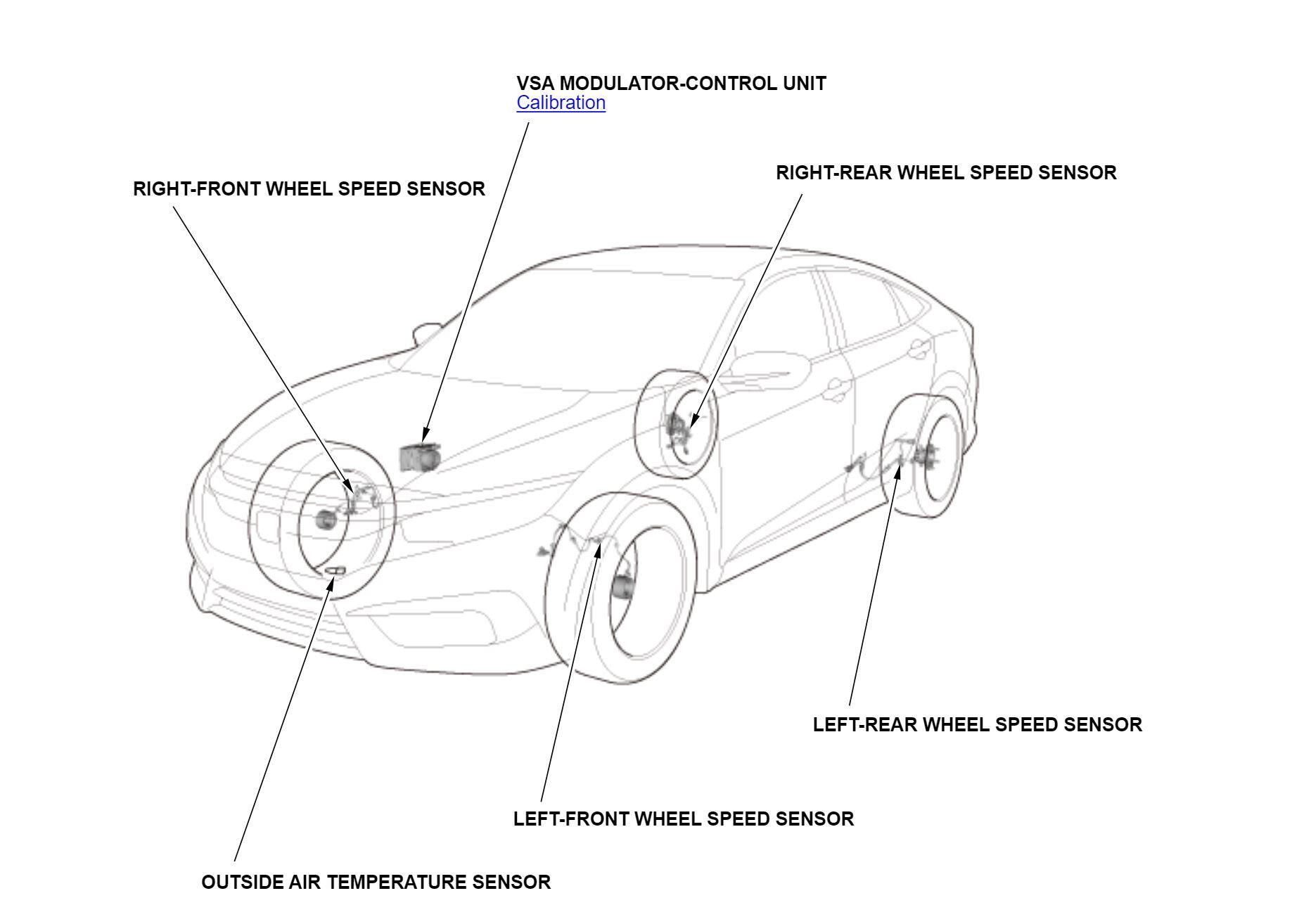There are two ways to reset your tire pressure light depending on your trim level
If you have a fancy color screen:
- Set your tire pressure with an accurate gauge
- Turn the car to the ON position (double click start button w/o pressing brake or turn key to ON)
- Touch the information button on the steering wheel, then press the audio remote button to select the VEHICLE SETTINGS.
- Press the audio remote button to select TPMS CALIBRATION.
- Use the audio remote button to select CALIBRATE.
- When the calibration successfully begins, “Calibration Started” is displayed on the display in the dash above the steering wheel when the system received the calibration.
- Drive the car 26 MPH or faster in a straight line and verify the light goes out.
If you don’t have a fancy screen:
- Set your tire pressure with an accurate gauge
- Turn the car to the ON position
- Press and hold the TPMS switch on the dash to the left of the steering wheel for 3 seconds.
- When the calibration successfully begins, the TPMS light on the dash blinks twice.
- Drive the car 26 MPH or faster in a straight line and verify the light goes out.
What was old is new again
The tire pressure monitoring systems (TPMS) on some newer Honda cars have reverted to the old-style TPMS called indirect TPMS. Honda Civic years 2016, 2017, 2018, 2019, and 2020 can be a little finicky when it comes to resetting the TPMS light or calibrating the system. This short article will explain how to turn off the TPMS light on your Honda Civic.
What is this orange light on my dash?
I case you’re unfamiliar, the TPMS light is an orange light that looks a bit like a horseshoe with and exclamation point in the middle. It’s supposed to be a cross-section of a tire. The exclamation point is saying, “hey, the tire pressure is low!”.
My tire pressure is OK but the TPMS light won’t go out!
This where the frustration can occur. The TPMS light can become The Little Boy Who Cried Wolf. The light is on, you set the tire pressure, and the TPMS light is still on. Arrggh! A strategically located piece of electrical tape can solve the problem, or better yet a picture of your favorite deity will no doubt benefit from a warm orange glow shining through.
The tire pressure monitoring system doesn’t monitor tire pressure
Honda’s newer TPMS system doesn’t actually measure the tire pressure like their older systems did. Instead it counts the revolutions of each of the wheels. If a tire is low, the radius between the axle and road will be smaller. The effective circumference will also be smaller. A smaller wheel must spin more times to go the same distance as a larger wheel.
All cars with ABS have a way to count wheel rotation already built in — the wheel speed sensors. The speed sensors for the ABS do double duty and work for the TPMS system as well. Every time you reset tire pressure, you must calibrate the system so it knows how big each wheel is with the proper tire pressure.
There are a couple advantages to indirect TPMS
- It’s cheaper to make because it uses existing parts
- It’s cheaper to maintain because you don’t need to replace sensors when the batteries fail
There are some problems with indirect TPMS though
One of the main problems is that it’s just not accurate. You can drive around with a tire that’s 30% low and the system won’t flag it. They tell us it will, and it might, sometimes, but it’s nowhere near as good as direct TPMS. Another problem is that you’ll need to reset the TPMS every time you mess with the wheels. Replace a tire, reset the system. Rotate the wheels, reset the system. The final thing might not be a “problem”, but I love direct TPMS systems that tell you the exact tire pressure for each wheel. Hop in the car in the morning, see all the tires at 38 PSI, and I’m confident my car will handle well and I’m not going to get stuck.
If you want to know more about resetting tire pressure light on other types of tire pressure monitoring systems, here’s an older article we published around 2007 when TPMS was still pretty new.
